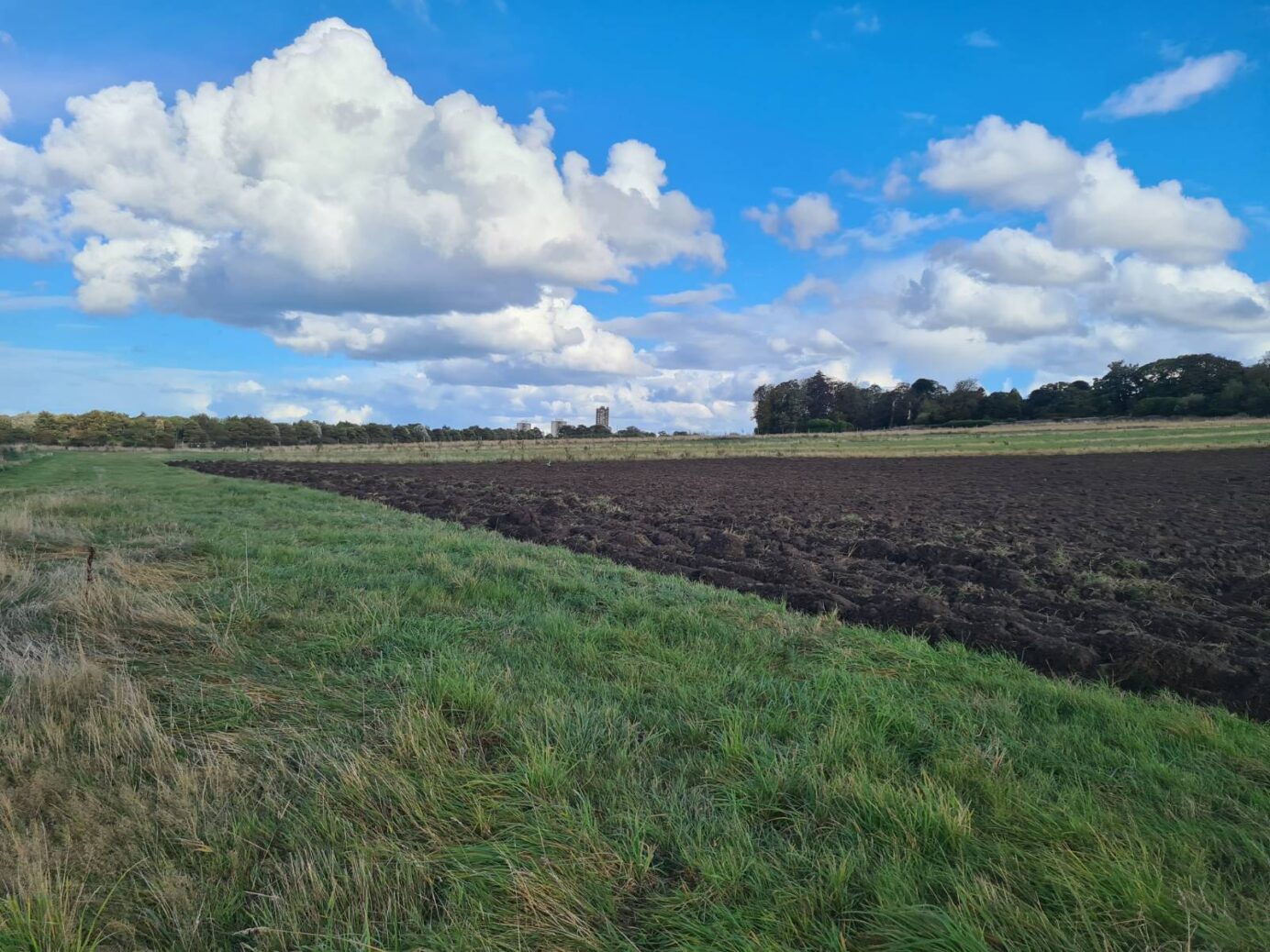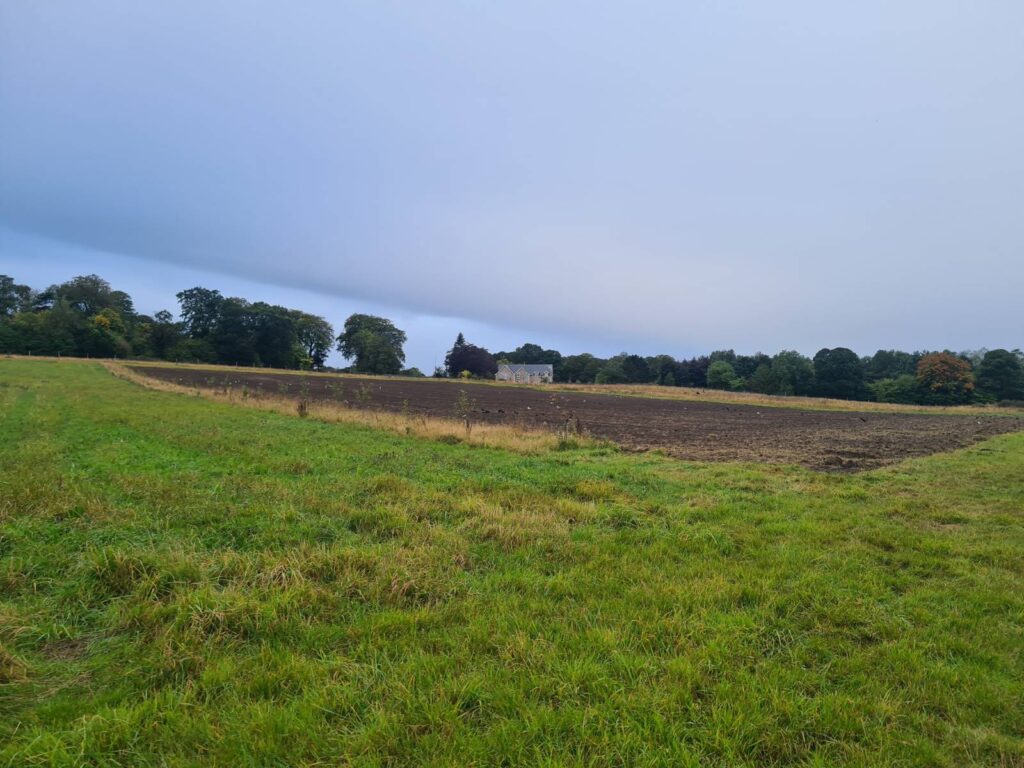Farm News | September 26, 2025
Successful Winter Wheat Sowing
Good news for the wheat growing project…

After our field-scale wheat struggles last year, we’re happy to have a good news for you this year. We have successfully sown three acres of wheat into the agroforestry alleys (within the Market Garden fencing). Only time will tell if the crop will be a success, but at least it’s in, so we have a chance.
Seed Sovereignty
![]()
This is all our own seed, saved from the previous crops. Through years of work, started by Granton Community Gardeners, north Edinburgh has its own, community-owned wheat variety: Granton Rouge d’Ecosse. We don’t have to buy these seeds in from a multi-national agribusiness (nor the artificial pesticides and fertilisers they sell to make their seeds grow). The seeds belong to us all, which means we can keep growing, saving and planting more. With each planting, we are bulking up the number of seeds we have for sowing again. This patient work has taken our wheat from a Granton street corner, to three acres of alleys (the fields with the lines of trees – you can just about see the tree saplings in the picture below, in the longer grass at the edge of the newly-sown area soil).

How Did We Sow the Wheat?
![]()
We have prepared the soil with green manures over the last two years. Green manures are plants that we sow to feed and protect the soil. When we farm, we’re not just trying to be ‘sustainable’ by not making things worse. We’re looking to give back – to make the soil healthier. Green manures put nutrients back into the soil, boosting the life underground. That effort then pays off for us too – healthy soil tends to grow stronger, more nutritious plants for us to eat. This is an example of how reciprocity works in farming.
We have found some friendly contractors who did the sowing. Last year, we were not able to book a contractor to do a job this size (too big for us to do without machinery, too small for many in the industry). The pressure on contractors was a lot down to the weather, which was totally different this year. A challenge of the changing climate: it brings even more uncertainty about what the growing conditions will be like each season.
What Happens Now?
So far, the crop has attracted quite a bit of attention from crows and gulls.
There is a very old farming rhyme:
Four seeds in a row
One for the rook
One for the crow
One to wither
And one to grow
(with many variations mentioning blackbirds, mice, cutworms…)
This wasn’t exactly our planting density calculation, but it was something in the same spirit. Planting some to spare is a form of insurance, and also reciprocity. When we understand that farms are part of ecosystems, we expect to share the crop with some wild kin. For years, this has been mistaken for ‘inefficiency’ in agribusiness, and before that by colonisers witnessing indigenous practises. It’s hard to change things again in this economy, but future harvests (future everything) depend on us keeping our ecosystem alive today.
Again, time will tell if we planted enough, and what the weather will do. We are lucky that we have this opportunity to rebuild a wheat crop, and spare some too.
For the long-term, we are working with Granton Community Gardeners, Granton Garden Bakery, and Scotland the Bread, so the grain we grow at the farm will be able to supply the bakery. It should never have to go far – it will be milled locally, and then go into local bread and baking, which goes into local bellies!
